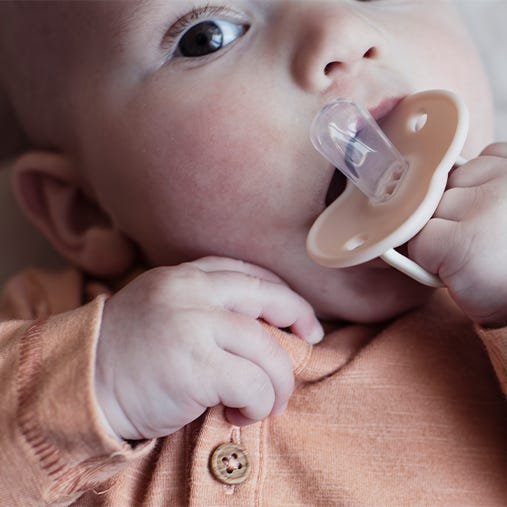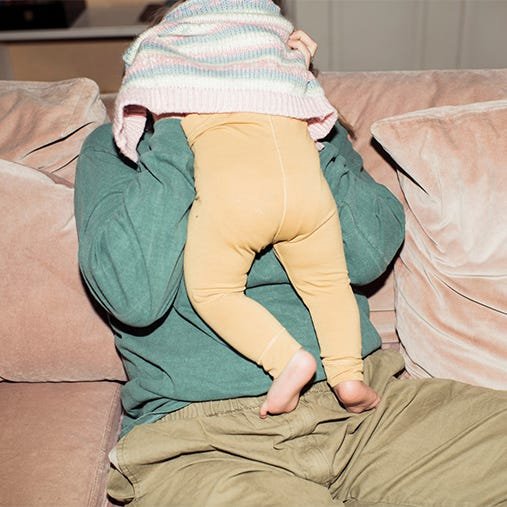If you're pregnant or planning to have a baby soon, you may have heard about the possibility of needing a C-section. While vaginal birth is the most common way to deliver a baby, sometimes a C-section is necessary for the health and safety of both parent and baby.
Let's discover everything you need to know about the C-section procedure, from why it's done to what to expect during and after the surgery. Whether you're scheduled for a C-section or just curious about the process, keep reading to learn more.
What is a C-section?
A C-section, also known as a cesarean section, is a major operation during which a surgical incision is made across your tummy, just below your bikini line. This incision cuts through your abdominal wall and uterus to deliver your baby.
According to the CDC, 32.1% of all deliveries in the USA were by cesarean.
Reasons why C-sections are required
There are certain situations where a C-section is the safest option for either you or your baby.
You may need a cesarean section instead of having a vaginal birth if:
- your baby is feet first (breech) and your obstetrician or midwife isn't able to turn them
- you have a low-lying placenta – also known as placenta praevia
- you have pregnancy-related high blood pressure – also known as pre-eclampsia
- you have certain infections such as herpes or HIV that’s untreated
- your baby isn’t getting enough nutrients or oxygen
- you’re having triplets or more babies – these pregnancies are almost always delivered by a planned (elective) C-section
- you're experiencing vaginal bleeding or your labor isn't progressing as it should
Asking for a cesarean
Some people elect to have a C-section for reasons other than those listed above, including anxiety about giving birth or past complications during birth.
And other people choose to have a planned cesarean for non-medical reasons.
If you're unsure about how you'd like your baby to be delivered, it's important to speak to your midwife or obstetrician about the benefits and risks of a cesarean compared with a vaginal birth so that you can make an informed decision.
Emergency C-sections
Although it sounds dramatic, an emergency C-section often isn't as last-minute as the name suggests.
The term emergency C-section is used to describe when a person goes into labor or is close to their due date and expects to give birth vaginally, then finds out they need a cesarean section.
Reasons someone may need an emergency C-section include if:
- their baby’s head is too big for their pelvis
- their baby is in the wrong position
- their labor doesn't progress, their contractions are weak, or their cervix hasn’t opened enough
- their baby is distressed and their labor hasn't progressed enough to warrant a safe forceps or ventouse delivery
- they develop a serious illness, (like very high blood pressure or heart disease)
- their baby needs to be delivered quickly for any other reason
Preparing for a C-section
The best way to recover quickly after a C-section is by preparing beforehand. Let's run through some of the things you can do before your baby arrives to get ready for your C-section.
How to write a C-section birth plan
If you're having a planned C-section, you should include as much information about this as possible in your birth plan. It's a good idea to think about:
- who you want to take with you – if your cesarean section is carried out under local anesthetic and you're awake, your partner or companion can sit with you if you'd like them to
- what music you'd like to play during the birth (if any)
- if you want a screen up during the procedure
What to pack in your hospital bag
Alongside the usual essential items you should pack in your hospital bag, there are some recommended bits and bobs that people who're giving birth by C-section should pack.
These include:
- comfy, high-waisted cotton panties
- loose-fitting clothes that won’t put pressure on your wound
- wet wipes for freshening up before you can shower
- bendy drinking straws – you might find it hard to sit up and drink at first
- slip-on shoes or slippers
Preparing your home for after your C-section
After your C-section, you'll need to rest up for a while to give your body time to recover. The following tips can help you prepare your home for when you return from the hospital with your newborn.
- Don’t be afraid to ask friends and family for help
- Keep any essential baby items close to your bed and sofa
- Keep wearing your comfiest high-waisted cotton underwear and maternity bras
- Use cushions to get into a comfortable feeding position
- Prep meals and store them in your freezer so you don’t have to think about cooking while you're recovering
The C-section procedure
Your preoperative appointment
C-sections are carried out in a hospital, and if yours is planned ahead of time, you'll be asked to attend a preoperative appointment around a week before the procedure to due to take place. This appointment is your chance to ask any questions you have and also gives your healthcare provider a chance to run some preoperative tests.
Preoperative prep
On the day of your procedure, you'll be asked to change into a hospital gown, and you'll have a catheter fitted, this will stay in until at least 12 hours after the procedure when you should be able to walk around.
Your obstetrician or midwife will also let you know when you need to stop eating and drinking before your operation – usually a few hours.
When you get to the operating room you'll be given an anesthetic – either spinal or epidural – and this will numb the lower part of your body, but you'll still be awake.
Sometimes a general anesthetic is needed, and this means you won't be awake during the procedure.
During the procedure
Now that we've covered what happens before the operation, let's run through a step-by-step breakdown of the cesarean section procedure – starting with entering the operating theatre and ending with leaving.
- Once you are comfortably positioned on the operating table, it may be slightly tilted to get started. A screen is then placed over your tummy to shield you from viewing the operation being performed.
- A 10 to 20-cm incision is made in your tummy and womb, typically a horizontal cut just below your bikini line, though a vertical cut below your belly button may be made in some cases.
- Your baby is delivered through the opening, which usually takes five to 10 minutes and may cause some tugging sensations.
- As soon as your baby is delivered, they'll be lifted up for you to see and brought over to you.
- After your baby is born, you will be given an oxytocin injection to encourage your womb to contract and reduce blood loss.
- Your womb is closed with dissolvable stitches, and the incision in your tummy is closed either with dissolvable stitches or stitches and staples that need to be removed after a few days.
The entire process typically takes between 40 to 50 minutes.
After the procedure
Once the C-section is complete, you'll be moved into a recovery room where your medical team will keep an eye on you to make sure you're well as the anesthetic wears off. They will also offer you pain relief, something to eat and drink once you feel ready, and support with breastfeeding if you'd like to breastfeed your baby.










